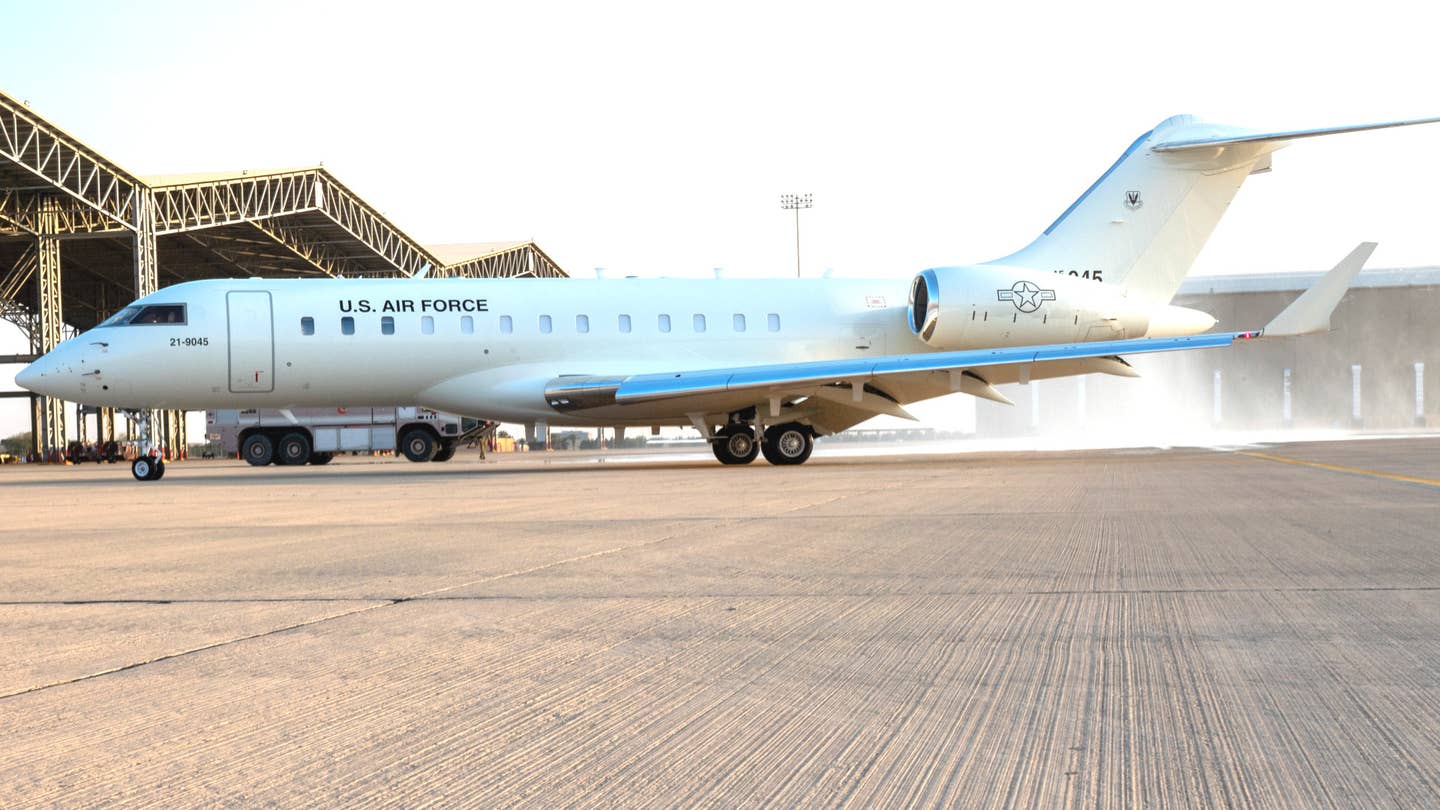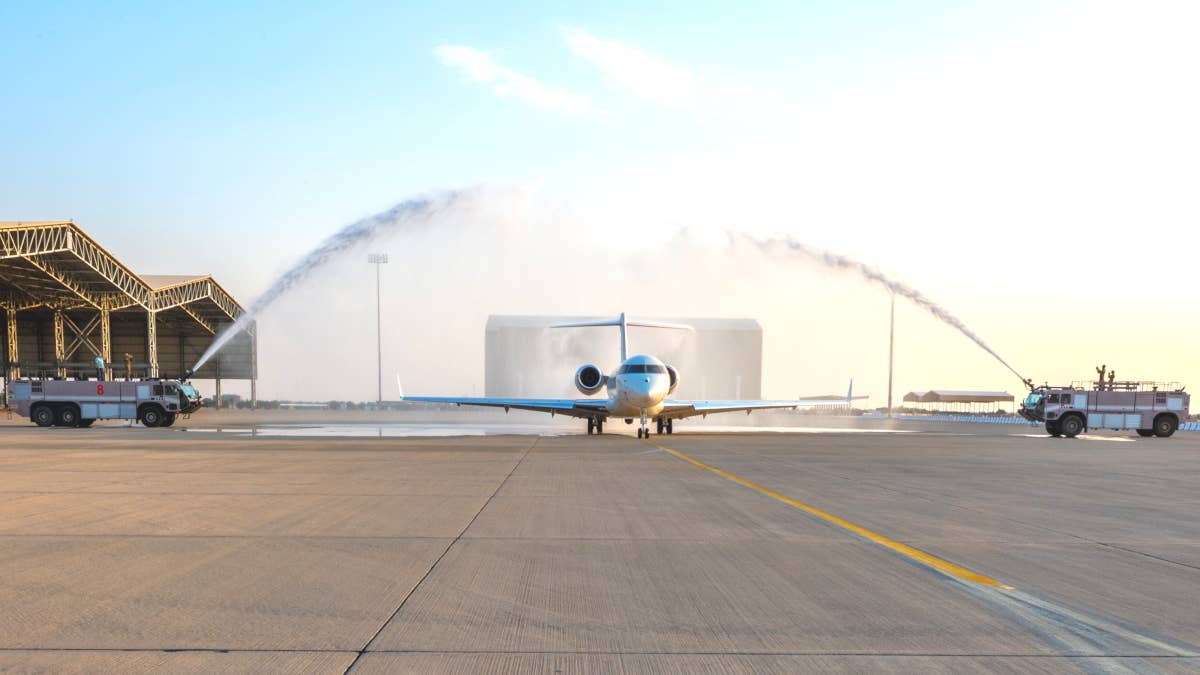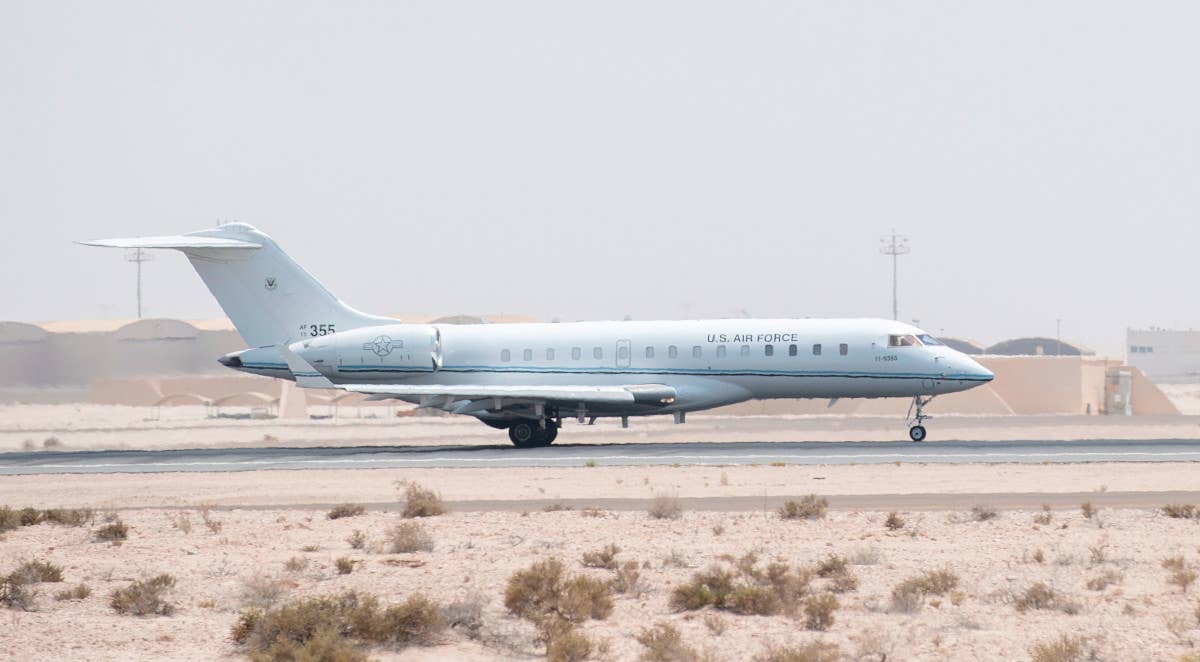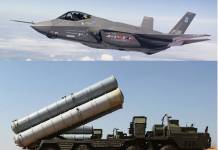The US Air Force (USAF) has deployed an all-new model of one of its precious communications aircraft to Saudi Arabia, according to a press release by the USAF issued on January 2.
An E-11A equipped with Northrop Grumman’s Battlefield Airborne Communication Node (BACN) arrived at Prince Sultan Air Base in mid-December last year.
The new E-11A, whose serial number is 21-9045, was handed over to the USAF by the Canadian airframe manufacturer Bombardier Defense in September 2022, and the aircraft arrived in Saudi Arabia on December 16, 2022, to officially join the 430th Expeditionary Electronic Combat Squadron at Prince Sultan Air Base.
The jet is the first of six E-11As the USAF is expected to receive by the end of 2026. It brings the total size of the USAF’s E-11A fleet to four.
The latest E-11A is a heavily modified Bombardier Global 6500 business jet, while the USAF has three other E-11As based on BD-700 and Global 6000 types.

USAF announced its plans to procure six new E-11As in February 2021 after one of its four original E-11As was lost in a crash in Afghanistan in 2020. The 430th Expeditionary Electronic Combat Squadron is the USAF’s only operational E-11A unit.
It was forward deployed at Kandahar Airfield in Afghanistan until 2020, after which, as part of the withdrawal of the US forces from that country, the unit was relocated first to Al Dhafra Air Base in the United Arab Emirates (UAE) and then to Prince Sultan Air Base.
The USAF is now also planning to establish a new base for the E-11As in the US at Robins Air Force Base (AFB) in Georgia, which will be in control of the 319th Reconnaissance Wing headquartered at Grand Forks Air Base in North Dakota.
The decision to establish a US-based E-11A squadron has come as the service phases out its fleet of E-8C Joint Surveillance Target Attack Radar System (JSTARS) battle management aircraft. Robins AFB is currently the USAF’s main E-8C base.
The E-11A Aircraft
The E-11A is a high-demand, low-inventory asset which operates in the US Central Command area of responsibility and spans more than 4 million square miles of the area stretching from Northeast Africa across the Middle East to Central and South Asia.
The E-11A aircraft are equipped with the BACN package, which the USAF officials describe as a ‘WiFi in the sky’ capability that enables the E-11A to function like a low-Earth satellite, maintaining aerial command and control capabilities for airborne and ground units.

The BACN package is a highly specialized communications gateway node designed to create an ‘active net’ over the battlespace and enable the transfer of data sent using a variety of distinct waveforms between different airborne platforms and forces on the ground/surface. The capabilities also allow the aircraft to serve as valuable communications relay nodes.
“The 430th supports warfighters who conduct around-the-clock operations in the CENTCOM AOR. We supply communication coverage to ground and air forces in active combat zones, which require consistent, clear communications to higher levels of leadership and other command and control assets,” said Lt. Col. Todd Arthur, the 430th EECS commander.
The E-11As have to be regularly rotated back to the US for maintenance and other work, and because these are so few, the training of new pilots to fly them mostly happens on the job in theater.
The E-11As Could Be Very Valuable In A Future Potential War Against China Or Russia
Following the end of active US military operations inside Afghanistan, the E-11As have been actively used for various other operational and training tasks while flying from the Arabian Peninsula.
These include various exercises off the coast of Israel and the ongoing US-led coalition operations in Iraq. Apart from that, in 2021, at least one E-11A was employed in a joint US-UAE exercise focussed on the use of multiple platforms together to execute and refine tactics, techniques, and procedures to counter Unmanned Aerial Vehicle (UAV) threats.

Reports suggest that the BACN capability of these jets could be very valuable in any future multi-national coalition operations, considering their ability to translate between various platforms that otherwise may not be able to communicate directly with each other.
For example, the E-11A aircraft could be very useful for supporting operations in the vast swathes of the Indo-Pacific, where the US military is increasingly preparing for a potential future high-end conflict with China.
The same thing can be said about the European theater, where the US and its NATO allies have also been expanding their force posture to deter Russia’s aggression, particularly in the aftermath of Russia’s invasion of Ukraine in 2022.
That said, for now, the primary focus of the USAF’s E-11A fleet appears to be in the Middle East, as is evident from the recent arrival of the latest model of the E-11A in the region.
- Contact the author at tanmaykadam700@gmail.com
- Follow EurAsian Times on Google News




